Quick Picks: Top Grills at a Glance

🏆 Best Overall for RVers
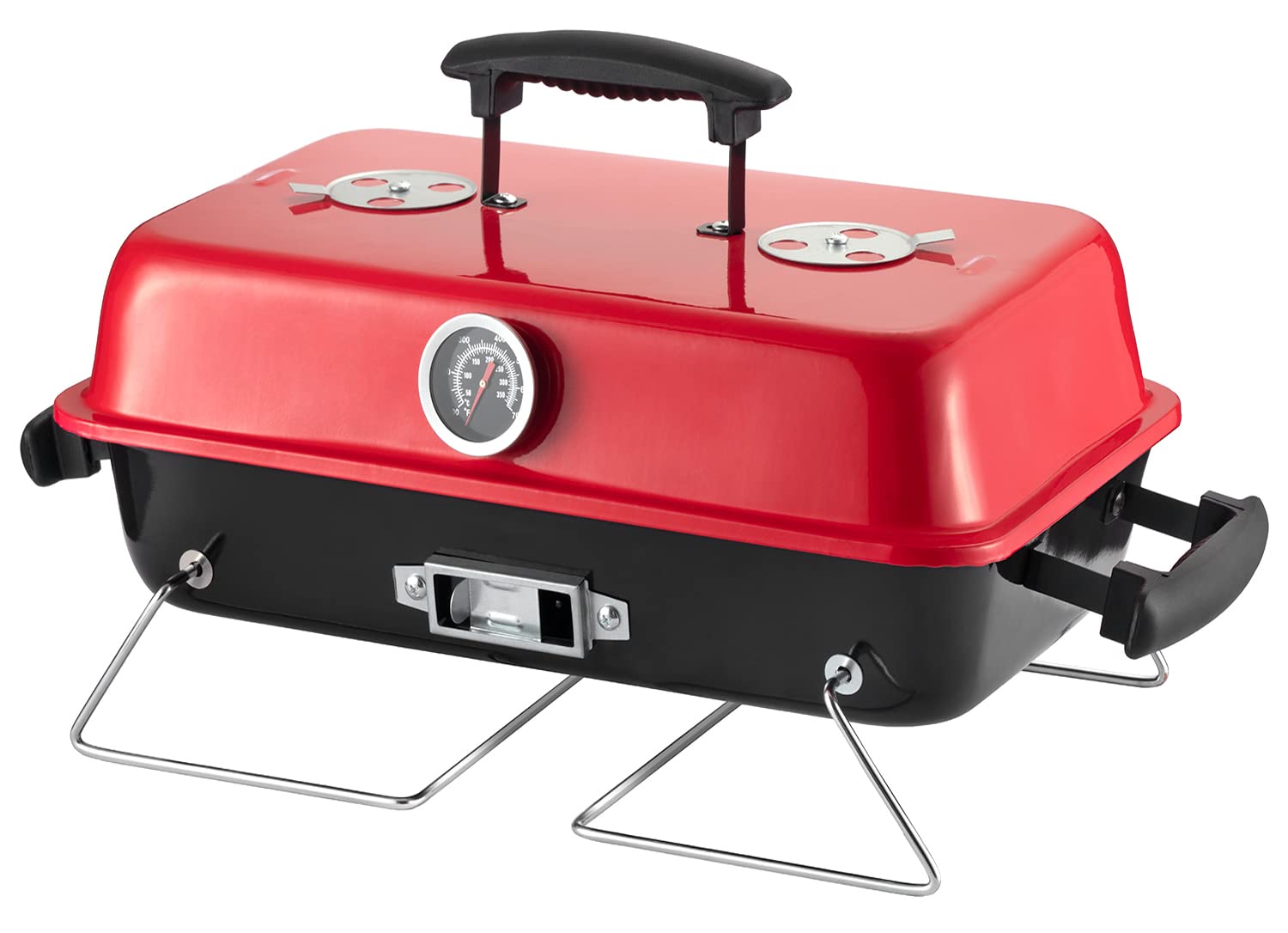
💰 Best Budget Pick

🥩 Best for Steaks/Searing
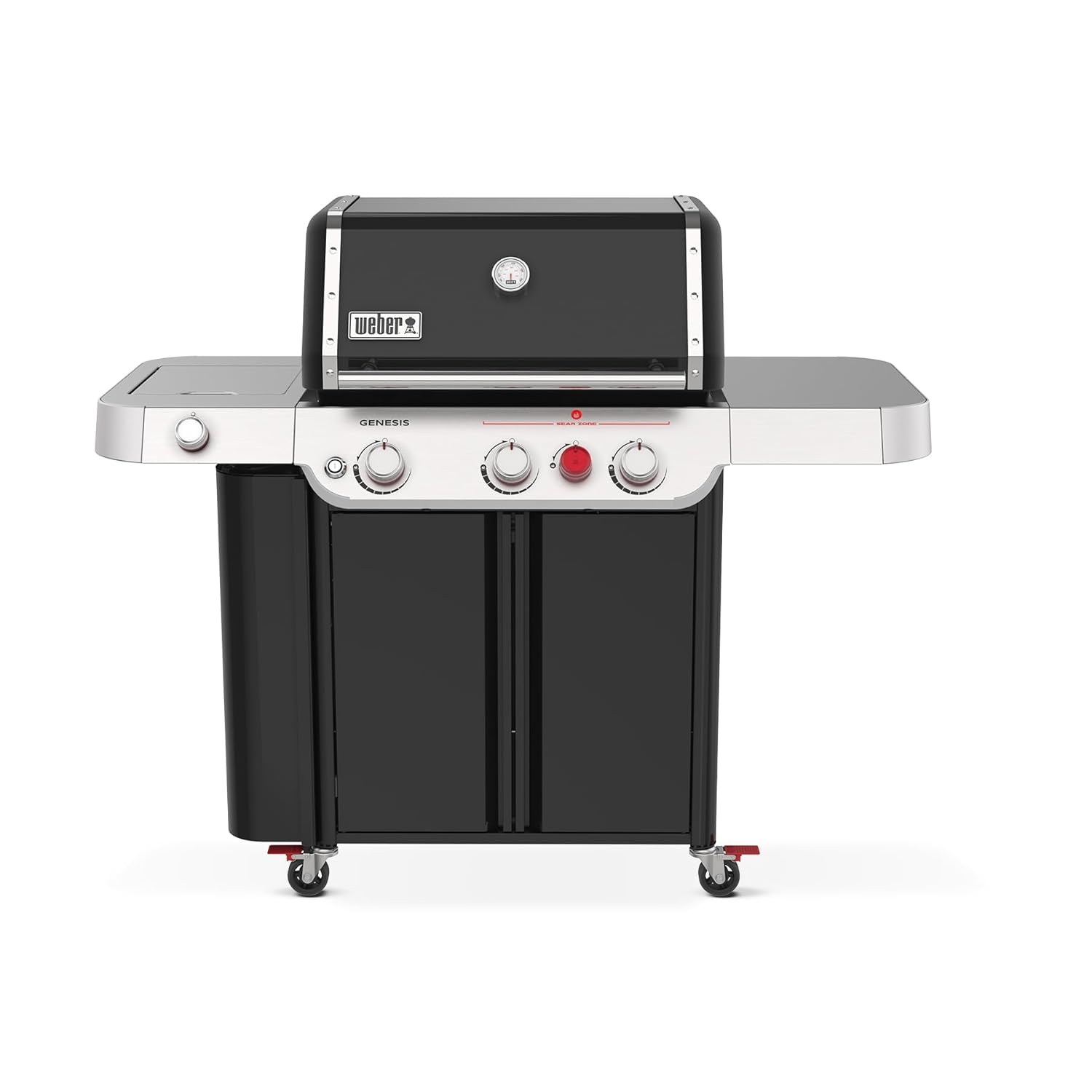
👨👩👧👦 Best for Large Groups
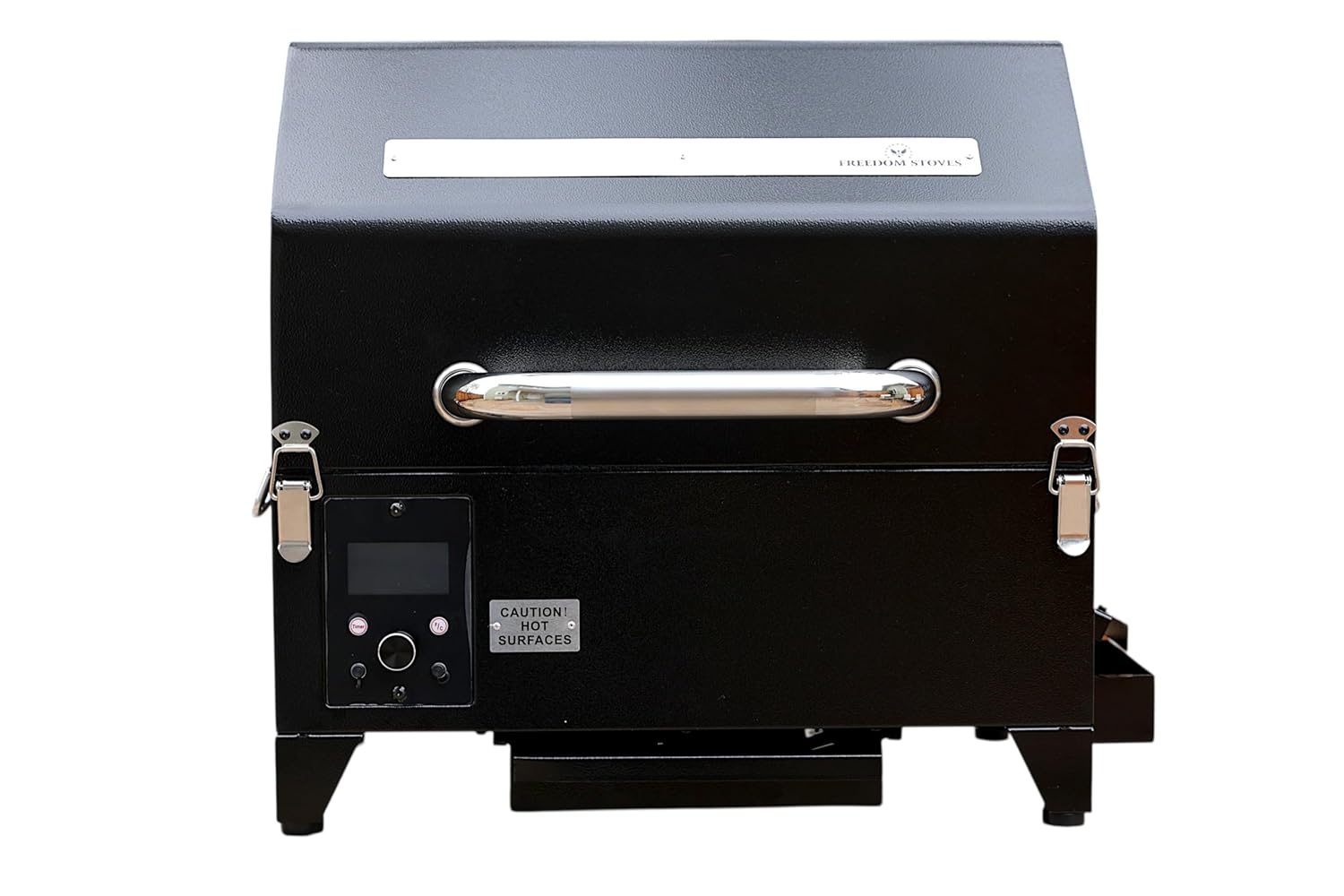
⛺ Best for Boondocking (Fuel Efficient)
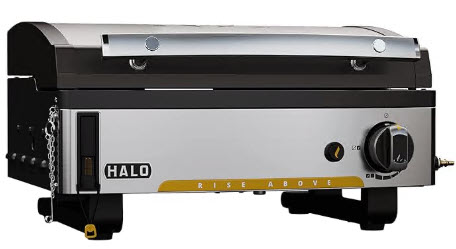
⚡ Best Electric (Fire-Ban Friendly)
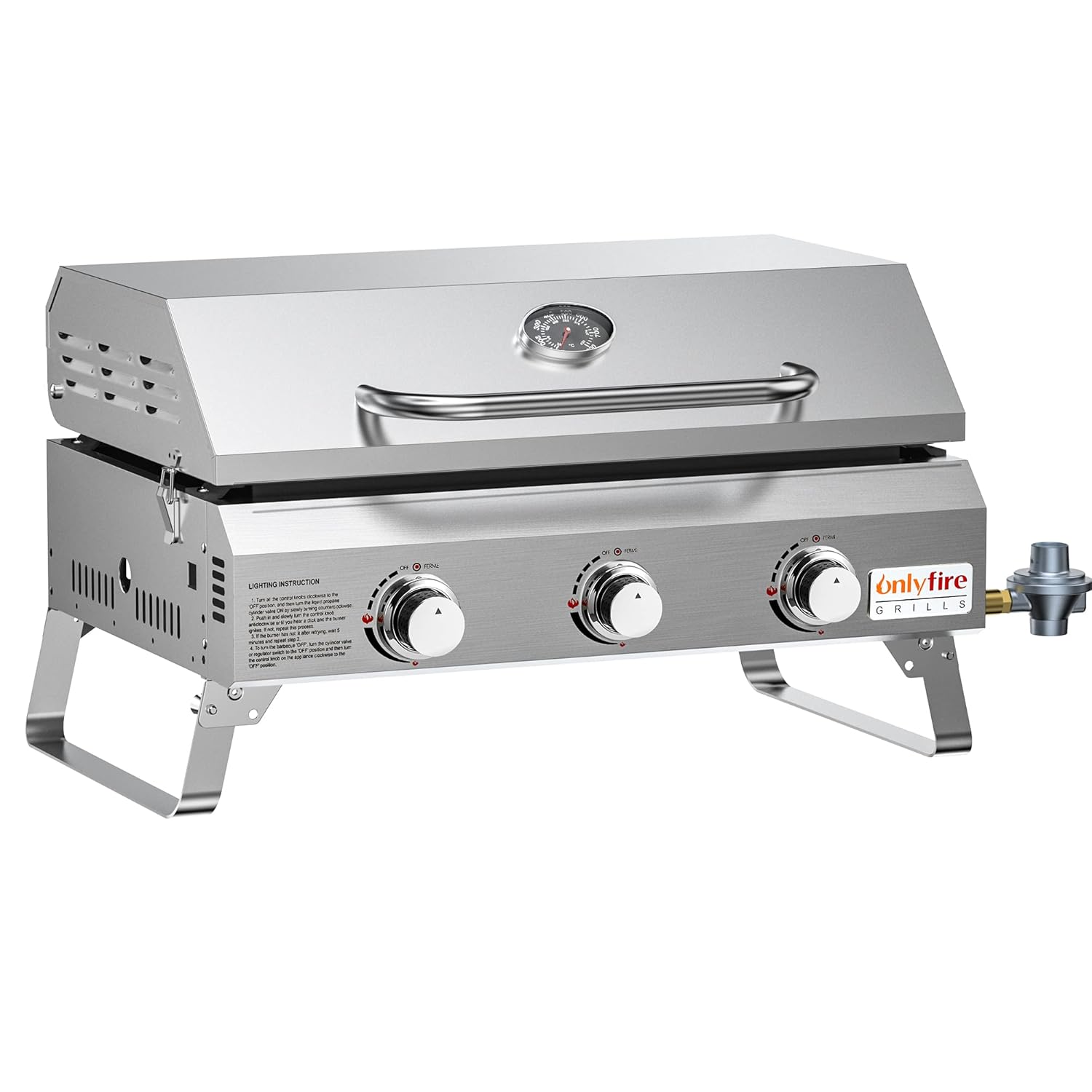
🔄 Best Multi-Fuel / Combo
How to Choose the Right RV Grill




1. Fuel Choice: Propane vs. Charcoal vs. Pellet vs. Electric
Propane
Pros: Fast heat-up, precise temperature control, works in cold weather, 20-lb adapter options, widely available.
Cons: Propane smell, requires tank management, can deplete mid-trip.
Best for: Weekend campers, tailgaters, anyone wanting quick setup.
Charcoal
Pros: Low cost, excellent sear capability, traditional flavor, no power required.
Cons: Slow heat-up (20–30 min), cleanup messier, uneven heat zones.
Best for: Budget-conscious campers, those wanting authentic char flavor.
Pellet
Pros: Fuel-efficient, clean-burning, excellent temperature consistency, feels like “set and forget.”
Cons: Heavier grill, needs battery (or solar), pellets take up storage space.
Best for: Full-timers, boondockers, multi-day trips with consistent cooking.
Electric
Pros: No flame (fire-ban friendly), quiet, instant on/off, simple cleanup.
Cons: Limited to 15A or 30A outlet, slower heat-up, no sear capability.
Best for: National park campers, quiet-hour enforcement, propane-restricted areas.
2. Space & Weight Considerations
- Storage Bay Fit: Measure your RV’s pass-through or storage compartment. Standard bays are 18–36 inches wide. Tabletop grills fit best; freestanding models require roof rack space.
- Total Carry Weight: Full-timers: keep under 50 lbs for easy handling. Weekend warriors can push to 65 lbs with a stand.
- Folded Dimensions: Note height and depth when closed. Account for propane lines or pellet hoppers that don’t retract fully.
- Mounting Options: Bumper racks, hitch-mounted carriers, or secure tie-downs on roof if under 100 lbs.
3. Cooking Style & Preferences
- Sear vs. Low-and-Slow: High-BTU propane or charcoal for sears; pellet or multi-zone for controlled low-heat.
- Griddle Needs: Breakfast lovers should consider flip-top combos or add-on griddle plates.
- Multi-Zone Control: Independent burners let you keep veggies warm while searing meat—essential for larger groups.
- Wind Resistance: Charcoal and pellets have windbreaks; portable propane grills need supplemental wind guards in breezy areas.
4. Campground Rules & Restrictions
- Fire Bans: Many national parks and high-fire-season areas ban propane and charcoal. Electric or pellet with battery is your only option.
- Propane Restrictions: Some campgrounds cap propane tank size or require quick-disconnect regulators. Call ahead or check rules.
- Quiet Hours: Pellet grills have a small fan; check if that’s permitted during quiet times (usually 10 PM–7 AM).
- Awning Clearance: Never grill directly under your RV’s awning. Minimum 15 feet away from structure.
Comparison Table
Use the filters below to narrow your search by fuel type and cook surface area.
| Model | Fuel | Cook Area (sq in) | BTU/Watt | Weight | Heat-Up Time | Wind Performance | Cleanup | Price | Warranty |
|---|---|---|---|---|---|---|---|---|---|
| Portable Pro 28 | Propane | 280 | 20,000 | 27 lbs | 8 min | Good | 15 min | $225 | 3 years |
| Camp Chef Apex | Propane | 320 | 32,000 | 45 lbs | 12 min | Excellent | 20 min | $399 | 5 years |
| Nexgrill Express | Propane | 420 | 36,000 | 65 lbs | 15 min | Excellent | 25 min | $549 | 5 years |
| Weber Jumbo Joe | Charcoal | 200 | High | 18 lbs | 25 min | Good | 30 min | $89 | 10 years |
| Char-Griller Portable | Charcoal | 250 | High | 32 lbs | 22 min | Good | 35 min | $119 | 5 years |
| Traeger Scout | Pellet | 300 | 20,000 equiv. | 40 lbs | 10 min | Excellent | 10 min | $349 | 3 years |
| Camp Chef Woodwind | Pellet | 300 | 18,000 equiv. | 45 lbs | 12 min | Excellent | 12 min | $399 | 5 years |
| George Foreman Elite | Electric (120V) | 240 | 1,500W | 16 lbs | 5 min | N/A | 8 min | $169 | 2 years |
| Blackstone Electric | Electric (120V) | 300 | 1,800W | 22 lbs | 6 min | N/A | 10 min | $199 | 3 years |
Ready to Find Your Perfect RV Grill?
Browse our curated collection of portable grills and RV camping essentials. Expert recommendations, competitive pricing, and fast shipping to get you on the road faster.
🛒 Shop RV Grills & AccessoriesIntegration with Your RV
20-lb Tank Adapters & Regulator Setup
Most portable grills use 1-lb propane cylinders, but your RV likely has a main 20-lb tank. Adapters make it easy to refill without carrying multiple disposable cylinders.
Standard Propane Hose Adapter
- Connects RV 20-lb tank directly to grill via female quick-disconnect.
- Regulates from high pressure (100+ psi) to low pressure (~11 psi) for safe operation.
- Cost: $30–$60. Widely available at RV and outdoor retailers.
Quick-Connect Hose (Low-Pressure)
- Do NOT use for direct 20-lb connection without a regulator.
- Best for: Secondary propane systems already regulated to ~11 psi.
- Check your RV manual before assuming low-pressure ports exist.
Storage & Mounting Best Practices
- Heat-Safe Stow Time: Allow grill to cool for 30–45 minutes before packing. Wrap in fire-safe mat if compact storage required.
- Propane Line Protection: Coil hose loosely; don’t kink or crush. Store separately from heat sources or sharp edges.
- Bumper Rack Mounts: Ideal for grills under 40 lbs. Ensure rack rated for weight; use vibration-damping straps.
- Roof Rack Caution: Only for lightweight electric or small tabletop models. Wind drag and wind-over forces are significant.
- Pass-Through Bay Storage: Most common. Use adjustable bins or foam blocks to prevent sliding. Secure lid to prevent accidental opening while traveling.
Power Considerations for Electric Grills
- 15A Outlet: Standard RV pedestal. Maximum 1,500W continuous draw (your grill should not exceed this).
- 30A Service: Allows 3,600W draw but must be shared with other appliances. Run grill solo if possible.
- Battery Drain: If on battery/solar, a 1,500W grill will drain a 100Ah battery in under an hour. Full hookups recommended.
- Extension Cord: Use 10AWG or thicker for runs over 50 feet. Thinner gauges cause voltage drop and overheating.
Safety & Best Practices

⚠️ Critical Safety Rules
- Never grill inside your RV, under the awning, or within 15 feet of the structure.
- Always use a level surface or stabilizing blocks; tipping hazard on uneven ground.
- Inspect propane cylinders and hoses for leaks (soapy water test) before each trip.
- Keep a fire extinguisher (5-lb minimum, rated for grease fires) nearby during cooking.
- Never leave a grill unattended while in use.
Distance from RV & Awning
Minimum 15 feet from the RV body and at least 10 feet from the awning edge. Propane and charcoal grills produce hot exhaust and can ignite vinyl or melt siding if positioned too close. Always place on level ground or use leveling blocks.
Grease Tray & Flare-Up Prevention
- Empty grease trap before each cook; buildup is a fire hazard.
- Line with aluminum foil for easy cleanup (replace after each use).
- Marinate fatty foods or trim excess fat to reduce flare-ups.
- Keep grate clean; old buildup can ignite unexpectedly.
- Use a grill cover or spray to smother small flames if flare-ups occur.
Thermometer Use & Temperature Control
- Invest in a remote-probe thermometer (wireless, ~$30). Eliminates guesswork and improves food safety.
- Internal meat temps: Burgers (160°F), Chicken (165°F), Steaks (130–135°F medium-rare).
- Monitor grill surface temp to prevent overheating or temperature swings in wind.
Cool-Down & Cylinder Handling
- Allow grill to cool for 30–45 minutes before packing. Wipe exterior with damp cloth once warm.
- Never disconnect a hot or pressurized cylinder. Close valve first, wait for pressure to release.
- Store cylinders upright (valves up) in a cool, shaded location. Never lay on their side.
- Check expiration dates on propane cylinders. Many retailers won’t refill expired tanks.
Leveling for Grease Flow & Heat Distribution
- Use a small level or phone app to ensure grill sits flat. Even 5 degrees of tilt affects grease drainage and heat zones.
- Leveling blocks (plastic or rubber) are safer than stacking wood, which can degrade and splinter.
- Check level again if you move the grill or if ground settles overnight.
High-Value Accessory Guide
Cooking Surface Upgrades
- Flat-Top Griddle Plate: Converts grill surface for breakfast (hash, eggs, pancakes). $20–$50. Fits most standard grills.
- Reversible Grates: Cast iron on one side, stainless on the other. Better sear, dual functionality. $30–$60.
- Infrared Sear Inserts: Replaces one grate section. Reaches 900°F+ for steakhouse-quality sears. $40–$100.
- Pizza Stone: Turns grill into oven. Heats evenly for woodfired-style results. $15–$40.
Temperature & Convenience
- Remote-Probe Thermometer: Wireless, ~200 ft range. Monitor internal meat temp from inside RV. $25–$70.
- Magnetic Grill Light: Clips to grill frame; no batteries needed if magnetic. Helps cook after dark. $10–$25.
- Grill-Mounted Tool Hooks: Hang spatula, tongs, etc. Prevents losing tools mid-cook. $8–$15.
- Drip Tray Liners: Disposable aluminum. Fast cleanup, safer grease disposal. $5–$10 per pack.
Weather & Safety
- Wind Guard / Windbreak: Portable aluminum screen. Improves fuel efficiency in breezy areas by 20–30%. $30–$60.
- Fireproof Mat / Grill Pad: Stainless steel or ceramic. Protects ground, reflects heat away from RV. $15–$40.
- Propane Hose Assembly (20-lb): Includes regulator, quick-disconnect, and valve. $30–$60.
- Cylinder Stabilizer Bracket: Holds 1-lb propane upright. Prevents leaks from tipping. $10–$20.
Maintenance & Storage
- Grill Brush & Scraper Set: Stainless steel, long-handled. Essential for rust prevention and safety. $12–$25.
- Grill Grate Cleaner (wire or pumice): Removes stubborn residue. $5–$15.
- Silicone Grill Gloves: Heat-resistant to 500°F+. Safer than thin cotton. $15–$30.
- Storage Cover / Grill Bag: Protects from UV and dust during storage. $25–$60.
Recipes to Prove Capability
These recipes showcase what your RV grill can do-from high-heat searing to gentle low-heat cooking.

🔥 Restaurant Sear: 1-Inch Ribeye
Cook Time: 5 min total (high heat)
- Heat grill to max; oil grates
- Sear steak 2 min per side
- Move to low zone; cover 1 min
- Rest 3 min; serve
Fuel: ~5 min on high = 0.3 lbs propane
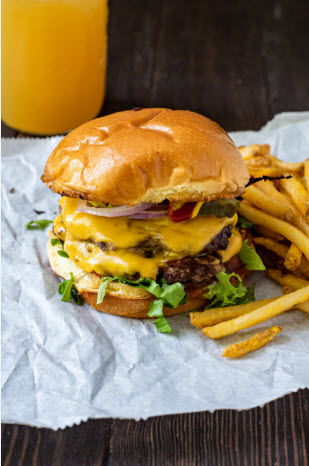
🍔 Smash Burgers + Caramelized Onions
Cook Time: 12 min total
- Heat grill to high; brush grates
- Form 6 thin patties; smash on grill 2 min per side
- Onions on cooler zone (10 min) while burgers cook
- Toast buns last minute
Fuel: ~12 min mixed = 0.5 lbs propane

🍗 Low & Slow: Herb Chicken Thighs
Cook Time: 25 min total
- Set grill to low (one burner only)
- Skin-side down, 12 min; flip 10 min
- Veggies on warming zone (whole meal)
- Internal temp 165°F
Fuel: ~25 min low = 0.4 lbs propane
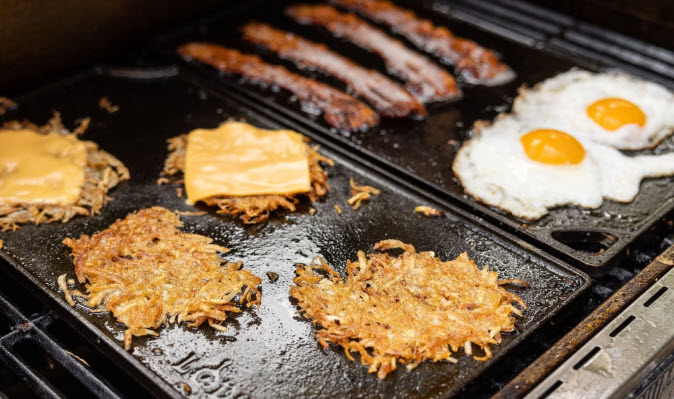
🍳 Griddle Breakfast: Hash for 4
Cook Time: 15 min total
- Mount griddle plate; heat to medium
- Diced potatoes, onions: 8 min
- Eggs on side; cover & cook 4 min
- Cheese & herbs, fold & serve
Fuel: ~15 min medium = 0.35 lbs propane
Pro Tip: All recipes work on propane, pellet, and charcoal grills. Electric grills handle breakfast griddle and low-heat chicken perfectly; steaks and sears are limited to 500°F, so expect slightly less crust.
Frequently Asked Questions
Yes, with a regulator and hose adapter. The regulator reduces pressure from ~100 psi to ~11 psi for safe grill operation. Cost is $30–$60. Always connect via the female quick-disconnect on your grill to prevent leaks.
Generally no. Pellet grills exhaust heat and smoke upward, which can ignite vinyl. They do produce less open flame than propane, but still keep them 15+ feet from your RV and under no awning cover. Always follow manufacturer guidelines.
Yes, if the grill is rated 1,500W or less. Check your grill’s power rating. At 1,500W, it draws the full 15A; avoid running other appliances simultaneously. Higher-wattage grills (1,800W+) may trip the breaker.
Trim excess fat, marinate overnight (helps create a crust barrier), keep the grease trap clean, and avoid opening the lid unnecessarily. If a flare-up occurs, move food to a cooler zone or use a grill spray to smother the flame. Never use water on grease fires.
Pellet grills are most efficient (fewer cooks drain less fuel per meal). However, they require battery power for the auger. If you’re on solar + battery, a pellet grill is ideal. Charcoal is a close second (no power required) but heavier and messier. Propane works but you’ll refill more often.
Never inside. This risks carbon monoxide poisoning and fire. Under the awning is also dangerous—exhaust heat and sparks can ignite vinyl. Minimum 15 feet from RV body and no overhead cover. Always err on the side of safety.
If you’re connecting to your main 20-lb RV tank, yes. A standard regulator (for outdoor grills) reduces high pressure to safe levels. Some RVs have low-pressure quick-connects, but verify in your manual. Never assume; always use appropriate regulators.
Typically 5–8 cooks (burgers, steaks, breakfast) depending on temperature and flame setting. Cold weather (30°F) reduces runtime by ~20%. Always carry a spare cylinder; propane-only models can’t switch fuel mid-trip.
Charcoal can reach hotter temperatures (900°F+) than most portable propane grills (400–500°F). However, high-BTU propane grills with infrared sear plates can rival charcoal for steak results. Charcoal is messier but offers superior sear flavor and crust.
Electric or pellet (with battery) are your options. Electric is instant and quiet. Pellet requires a small battery (recharged via solar or AC), but offers the closest flavor profile to propane. Check fire-ban maps and call ahead to confirm restrictions.
Our Testing Methodology
For credibility and transparency, here’s how we evaluate each grill:
1. Heat Performance (15-minute test)
Lid closed, record peak temperature and time to reach 500°F (or max). Note: Electric grills max out lower; charcoal/propane are compared separately.
2. Wind Resistance
Cook with a small fan or on a breezy day. Monitor heat loss, flare-up frequency, and grate temp consistency across zones.
3. World Cooks
- 6 burgers + veggies (even heating test)
- Steak sear at max heat (crust quality)
- Breakfast griddle on low (temp control)
4. Fuel Runtime
Cook a standard meal until cylinder swap (or battery warning). Note fuel consumed, runtime, and efficiency.
5. Cleanup & Portability
Time from shutdown to stow. Measure setup/teardown times, grate stability, and handling weight. Test leveling on uneven campground ground.
All tests conducted at sea level, 50°F baseline temp (unless otherwise noted for seasonal testing). Wind speeds 5–10 mph during wind tests. Fuel brands standardized across tests.
